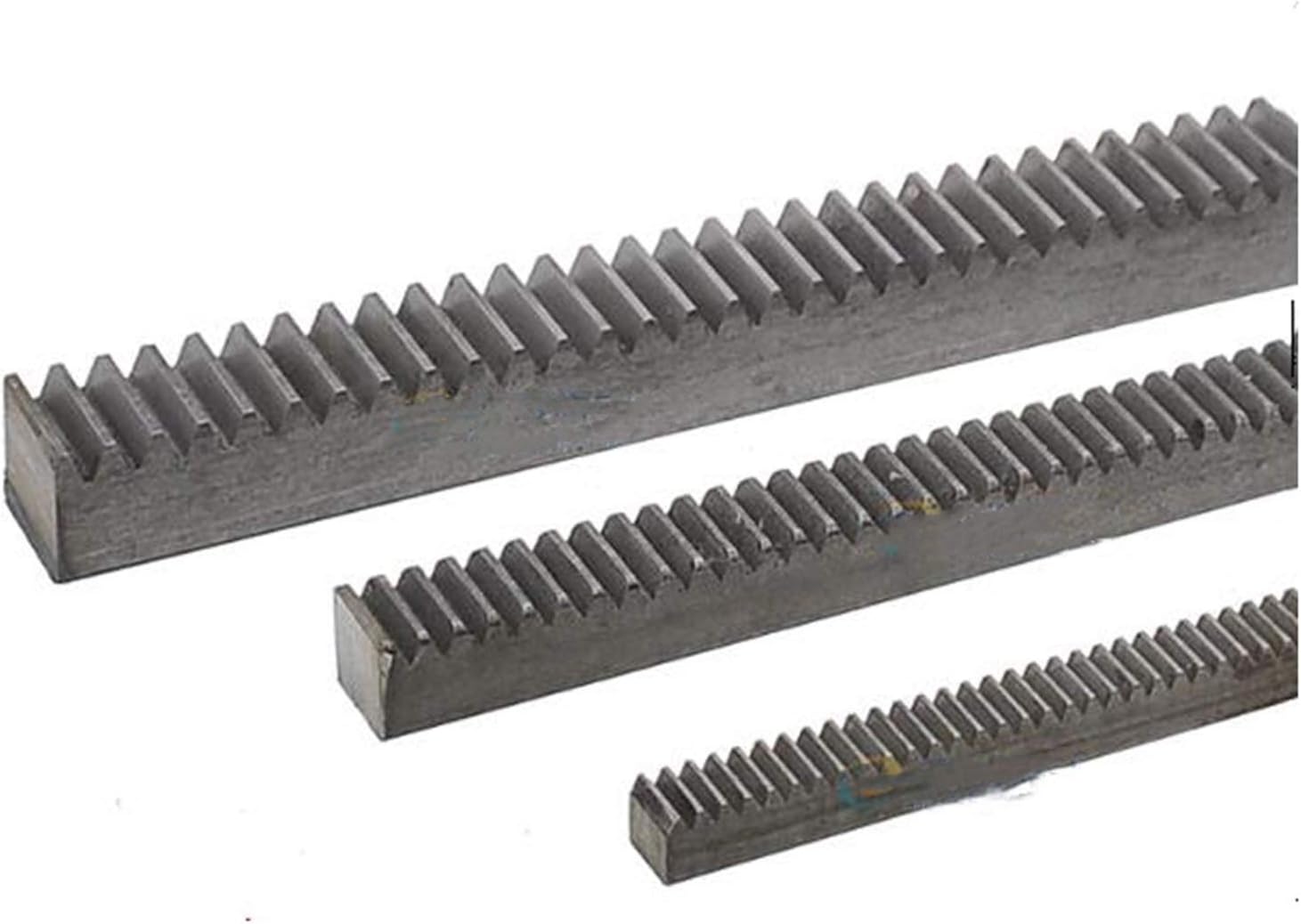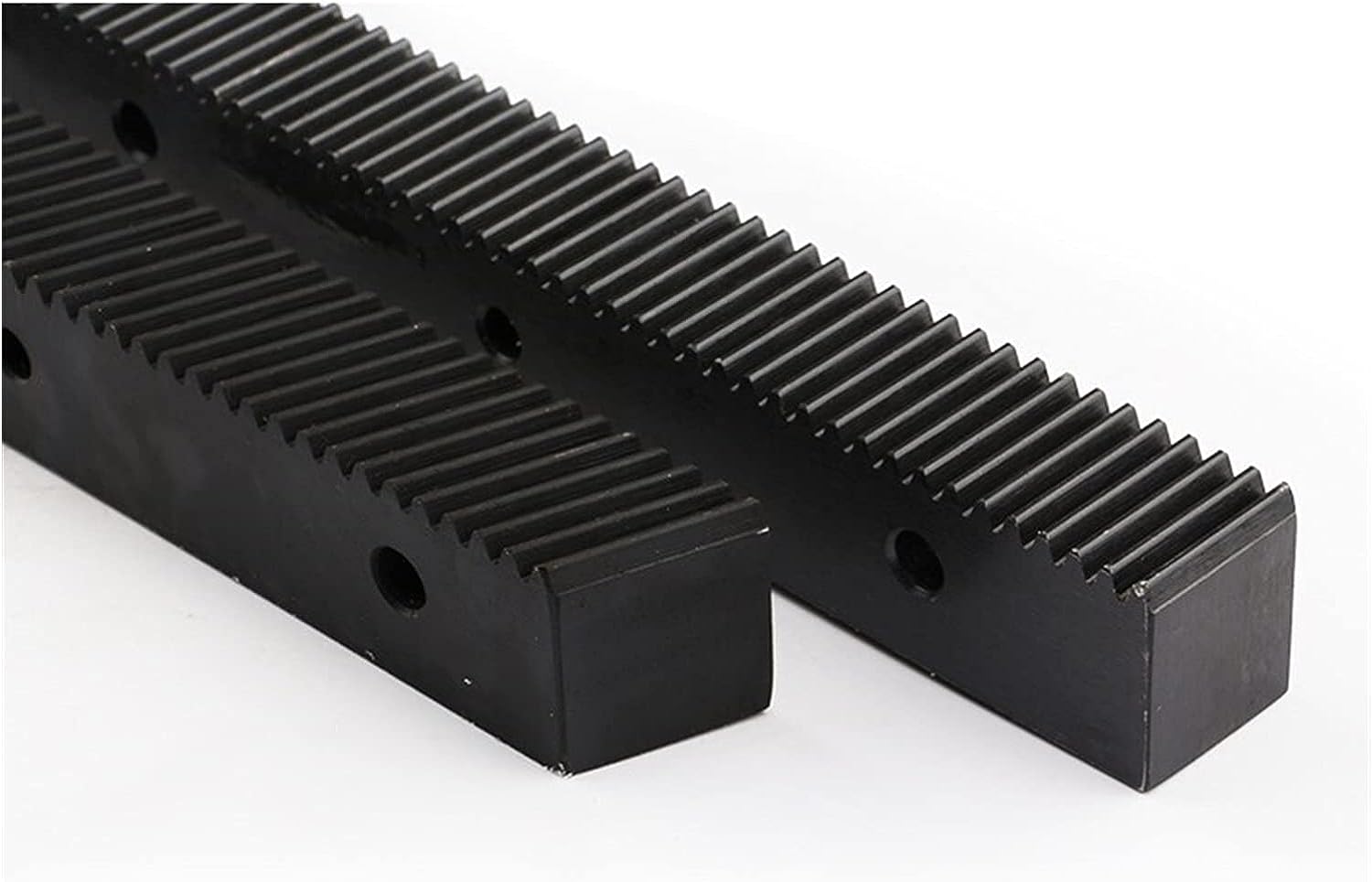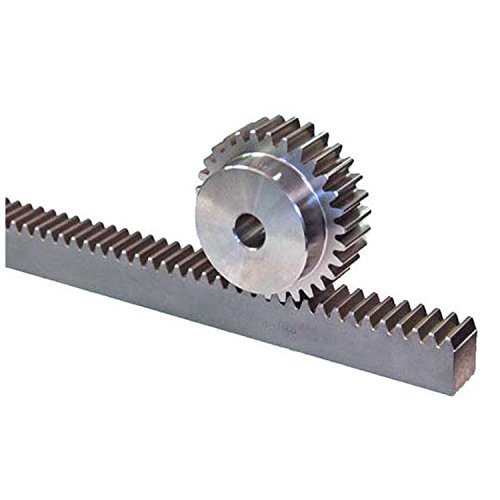Product Description
Heat treatment welding straight Tooth galvanized Automatic sliding gate operator Steel gear rack for Construction machinery
|
Product name |
Gear rack |
|||
|
Type |
Helical gear rack,spur gear rack,sliding gate gear rack |
|||
|
Module |
M1,M1.5,M2,M2.5,M3,M4,M5,M6,M8,M10 |
|||
|
Precision |
DIN6,DIN7,DIN8,DIN9 |
|||
|
Surface treatment |
Black oxide,zinc galvanize, heat treatment, |
|||
|
Material |
Carbon steel,stainless steel,brass,pom,nylon,plastic |
|||
|
Process method |
CNC machining, Turning, milling ,drilling, grinding,shaving,shaping,hobbing |
|||
|
Application |
Automotive Parts,Hareware Par,Construction,Machinery, |
|||
|
Standard |
ISO |
|||
Related products
/* January 22, 2571 19:08:37 */!function(){function s(e,r){var a,o={};try{e&&e.split(“,”).forEach(function(e,t){e&&(a=e.match(/(.*?):(.*)$/))&&1
| After-sales Service: | Installation Guide |
|---|---|
| Warranty: | 1.5 Years |
| Type: | Gear Rack |
| Application: | Excavator |
| Certification: | CE, ISO9001: 2000 |
| Condition: | New |
| Samples: |
US$ 9999/Piece
1 Piece(Min.Order) | |
|---|

What safety considerations should be kept in mind when working with metric gear racks?
Working with metric gear racks requires careful attention to safety to prevent accidents and ensure the well-being of individuals involved. Here’s a detailed explanation of the safety considerations that should be kept in mind:
1. Protective Measures: When working with gear racks, it is essential to use appropriate personal protective equipment (PPE) such as safety glasses, gloves, and protective clothing. PPE helps protect against potential hazards such as sharp edges, flying debris, or accidental contact with moving parts. Safety shoes with slip-resistant soles should be worn to prevent slips and falls in the work area.
2. Lockout/Tagout: Before performing any maintenance or repair tasks on machinery or equipment involving gear racks, it is crucial to follow lockout/tagout procedures. Lockout/tagout involves isolating the power source and securing it with a lock or tag to prevent unexpected startup or release of stored energy. This procedure ensures that the gear rack and associated machinery are in a safe state during maintenance or repair activities.
3. Proper Training: Adequate training is vital for individuals working with gear racks. Operators, maintenance personnel, and other involved individuals should receive training on the safe handling, operation, and maintenance of gear racks. Training should cover topics such as proper installation procedures, safe working distances, emergency shutdown protocols, and the use of safety devices. Well-trained personnel are more aware of potential risks and can take appropriate precautions to prevent accidents.
4. Clearance and Workspace: It is important to ensure sufficient clearance around the gear rack system for safe operation and maintenance. Adequate workspace allows personnel to perform tasks comfortably without being at risk of getting trapped or injured. Machinery or equipment incorporating gear racks should be properly designed and arranged to provide safe access for maintenance and inspection activities.
5. Regular Inspections: Scheduled inspections of gear racks are essential to identify any signs of wear, damage, or misalignment. Regular inspections help detect potential safety hazards before they escalate into more significant issues. Any worn or damaged components should be promptly replaced to ensure the safe operation of the gear rack system. Lubrication levels should also be checked and maintained as per manufacturer recommendations to prevent excessive friction or overheating.
6. Safe Loading and Operation: When loading objects onto gear racks, it is important to adhere to the recommended load limits specified by the manufacturer. Overloading the gear rack can lead to excessive stress, premature wear, and potential failure. Additionally, the gear rack should be operated within its designed speed limits to maintain safe and reliable performance. Sudden changes in speed or excessive acceleration should be avoided to prevent accidents or loss of control.
7. Emergency Stop and Warning Systems: Gear rack systems should be equipped with emergency stop buttons or switches that can quickly halt the operation in case of an emergency. Clear warning signs and labels should be placed near the gear rack system to alert personnel about potential hazards and safety precautions. Properly functioning emergency stop and warning systems contribute to a safer working environment.
8. Proper Handling and Lifting Techniques: When handling gear racks or related components, proper lifting techniques should be employed to prevent strains or injuries. The use of lifting equipment, such as cranes or hoists, may be necessary for heavier gear rack assemblies. Personnel should be trained in safe lifting practices and use appropriate lifting aids to avoid accidents and minimize physical strain.
9. Documentation and Manuals: Manufacturers provide documentation and manuals that contain important safety information specific to their gear rack products. It is crucial to read and understand these materials, including safety guidelines, recommended maintenance procedures, and emergency procedures. Following the manufacturer’s instructions ensures compliance with safety requirements and helps prevent accidents.
10. Risk Assessment: Conducting a thorough risk assessment of the gear rack system and its associated machinery is essential. Identifying potential hazards, evaluating risks, and implementing appropriate control measures are crucial steps in ensuring the safety of personnel working with gear racks. Risk assessments should be periodically reviewed and updated as necessary to address any changes in the working environment or operational conditions.
It is important to note that the above safety considerations are general guidelines, and specific safety requirements may vary depending on the application, industry, and local regulations. Consulting with safety professionals and following industry best practices is recommended to ensure comprehensive safety measures are in place when working with metric gear racks.
In summary, maintaining a safe working environment when working with metric gear racks involves implementing protective measures, following lockout/tagout procedures, providing proper training, ensuring adequate clearance and workspace, conducting regular inspections, loading and operating within safe limits, utilizing emergency stop andwarning systems, using proper handling and lifting techniques, familiarizing oneself with documentation and manuals, and conducting a thorough risk assessment. By prioritizing safety considerations, individuals can minimize the risk of accidents and create a safer working environment when working with metric gear racks.

How do metric gear racks contribute to efficient power transmission?
Metric gear racks play a significant role in enabling efficient power transmission in various mechanical systems. Here’s a detailed explanation of how metric gear racks contribute to efficient power transmission:
1. Direct and Positive Power Transfer: Gear racks provide a direct and positive power transfer mechanism. When meshed with a mating gear, such as a spur gear or a helical gear, the teeth of the gear rack engage with the teeth of the gear, creating a mechanical linkage. This direct engagement ensures a positive power transfer without slippage or energy loss, resulting in efficient power transmission from the driving gear to the gear rack.
2. High Load-Carrying Capacity: Gear racks are designed to handle high loads and transmit power efficiently. The teeth of the gear rack distribute the load along the entire length of the rack, allowing for increased load-carrying capacity compared to other types of power transmission components. This high load-carrying capacity ensures efficient power transmission without excessive wear or deformation, even under heavy loads or dynamic conditions.
3. Efficient Force Distribution: The tooth profile of the gear rack is carefully designed to ensure uniform force distribution along the teeth engagement. This uniform force distribution minimizes localized stress concentrations and allows for efficient power transmission across the entire gear rack. It helps prevent tooth breakage, excessive wear, and premature failure, resulting in improved power transmission efficiency and longevity.
4. Precision and Accuracy: Metric gear racks are manufactured to precise dimensions and tooth profiles, ensuring accurate and repeatable motion transmission. The precision of the teeth engagement between the gear rack and the mating gear contributes to efficient power transmission by minimizing backlash, vibrations, and energy losses associated with misalignment or inconsistent meshing. This precision allows for smooth and reliable power transfer, particularly in applications that require high positional accuracy or synchronized motion.
5. Customizability and Versatility: Metric gear racks offer flexibility in design and customization, allowing engineers to optimize power transmission efficiency for specific applications. They are available in various sizes, modules, and materials, enabling the selection of the most suitable gear rack for a given application’s requirements. The ability to choose the appropriate gear rack ensures efficient power transmission by matching the rack’s specifications to the load, speed, and environmental conditions of the system.
6. Efficient Lubrication and Maintenance: Proper lubrication is crucial for efficient power transmission and the longevity of gear racks. Adequate lubrication reduces friction and wear between the gear rack and the mating gear, resulting in improved power transmission efficiency. Additionally, gear racks are designed for ease of maintenance, allowing for periodic inspection, lubrication, and replacement, if necessary. Regular maintenance helps to ensure optimal performance and efficient power transmission over the gear rack’s service life.
7. Application-Specific Optimization: Metric gear racks can be optimized for specific applications to further enhance power transmission efficiency. Factors such as tooth profile design, material selection, surface treatments, and gear geometry can be tailored to minimize friction, reduce noise, increase wear resistance, and improve overall efficiency. By considering the specific requirements and constraints of the application, engineers can optimize gear rack design and configuration to achieve the highest possible power transmission efficiency.
In summary, metric gear racks contribute to efficient power transmission through direct and positive power transfer, high load-carrying capacity, efficient force distribution, precision and accuracy, customizability and versatility, proper lubrication and maintenance, and application-specific optimization. These factors ensure reliable and efficient power transmission in various mechanical systems, enabling the effective transfer of power from the driving gear to the gear rack while minimizing energy losses, wear, and misalignment-related issues.

In which industries are metric gear racks commonly used?
Metric gear racks find widespread use in numerous industries where linear motion, motion control, and precision positioning are required. Here’s a detailed explanation of the industries where metric gear racks are commonly used:
1. Manufacturing: Metric gear racks are extensively employed in the manufacturing industry. They are utilized in various machinery and equipment, such as machine tools, conveyor systems, automated assembly lines, and robotic arms. Gear racks enable precise linear motion and positioning, ensuring accurate machining, material handling, and assembly processes. The manufacturing industry encompasses sectors like automotive, aerospace, electronics, consumer goods, and more.
2. Automation and Robotics: Metric gear racks play a crucial role in the automation and robotics industry. They are used in robotic arms, linear actuators, and motion control systems to achieve controlled and precise movement. Gear racks enable robots to perform tasks such as pick-and-place operations, assembly, material handling, and inspection. The automation and robotics industry finds applications in manufacturing, logistics, healthcare, agriculture, and other sectors.
3. Logistics and Material Handling: Metric gear racks are commonly employed in logistics and material handling systems. They facilitate the movement of conveyors, lifts, sorting systems, and automated storage and retrieval systems (AS/RS). Gear racks enable efficient and accurate material flow, aiding in processes like warehousing, distribution, order fulfillment, and package handling. The logistics and material handling industry is vital for supply chain management and encompasses sectors such as e-commerce, retail, and distribution.
4. Printing and Packaging: Metric gear racks are utilized in the printing and packaging industry. They are integrated into printing machinery, such as offset printers, digital printers, and flexographic printers, to enable precise paper movement and registration. Gear racks ensure accurate positioning of the printing substrate, allowing for high-quality prints with tight registration. Additionally, gear racks are used in packaging machinery for controlled material feeding, cutting, and sealing processes.
5. Machine Tools: Metric gear racks are commonly found in the machine tool industry. They are used in milling machines, lathes, drilling machines, and other CNC (computer numerical control) machines. Gear racks provide linear motion along the tool slide, allowing for precise positioning of cutting tools or workpieces. This industry serves various sectors, including metalworking, woodworking, and fabrication.
6. Medical and Healthcare: Metric gear racks have applications in the medical and healthcare industry. They are utilized in medical equipment, diagnostic devices, and laboratory instruments that require precise linear motion and positioning. Gear racks enable controlled movement in equipment such as medical imaging systems, robotic surgery systems, and laboratory automation systems. The medical and healthcare industry encompasses areas like hospitals, clinics, research laboratories, and medical device manufacturing.
7. Scientific Research and Instrumentation: Metric gear racks are used in scientific research and instrumentation applications. They find application in precision equipment, analytical instruments, and scientific devices that require accurate linear motion. Gear racks enable controlled movement in devices such as spectrometers, microscopes, telescopes, and experimental setups. This industry includes research institutions, universities, laboratories, and scientific instrument manufacturers.
8. Automotive and Transportation: Metric gear racks are employed in the automotive and transportation industry. They are utilized in automotive manufacturing processes, including assembly lines, robotic welding systems, and paint booths. Gear racks enable precise linear motion for component positioning and movement control. Additionally, gear racks find application in transportation systems like railway signaling, door mechanisms, and control systems. The automotive and transportation industry involves vehicle manufacturing, transportation infrastructure, and logistics.
9. Energy and Power: Metric gear racks have applications in the energy and power industry. They are used in equipment such as wind turbines, solar tracking systems, and hydroelectric power plants. Gear racks enable controlled movement for optimizing energy capture and conversion. They facilitate the adjustment of rotor blades, solar panels, and other components to maximize energy generation. The energy and power industry encompasses renewable energy, conventional power generation, and utilities.
10. Electronics and Semiconductor: Metric gear racks are employed in the electronics and semiconductor industry. They find application in manufacturing processes such as semiconductor wafer handling, printed circuit board (PCB) assembly, and display panel production. Gear racks enable precise movement and positioning of components, ensuring accuracy and reliability in electronic device manufacturing. This industry includes sectors like consumer electronics, semiconductor fabrication, and electronic component manufacturing.
These are some of the industries where metric gear racks are commonly used. The versatility and reliability of gear racks make them essential components in various applications that require linear motion, motion control, and precision positioning.


editor by Dream 2024-04-25